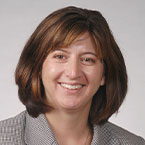By:
Jennifer A. Sample, MD, FAAP & Lauren Zajac, MD, MPH, FAAP
Protecting children from exposure to lead is important to lifelong good health. Even low levels of lead in blood have been shown to affect IQ, ability to pay attention, and academic achievement.
The most important step that parents, pediatricians, and others can take is to prevent lead exposure before it occurs. See Blood Lead Levels in Pregnant & Breastfeeding Moms and
Lead Exposure: Steps to Protect Your Family.
Your pediatrician can screen your child for lead exposure
risk factors. Based on risk factors identified, they may recommend a
blood test to measure the level of lead in your child's blood. Usually, there are no obvious signs or symptoms if a child is exposed to lead. A blood test is an easy way to find out.
Update on blood lead levels in children
Until 2012, children were identified as having a blood lead level of concern if the test result was 10 or more micrograms per deciliter of lead in blood. Prior to 2012, the blood lead test results for children with levels below 10 may, or may not, have been reported to parents.
Experts now know that there is no safe lead level. Because of this, the Centers for Disease Control and Prevention (CDC) has lowered the reference level for blood lead testing in children. The level is based on the U.S. population of children ages 1-5 years who are in the top 2.5% of children when tested for lead in their blood. This number is used to monitor the progress of lead poisoning prevention in the United States.
The current CDC reference level is 3.5 micrograms per deciliter of lead in blood for children.
What has not changed: the need to find the source of lead in children with all elevated blood lead levels so that exposure can be stopped. These new recommendations do not change the recommendation that chelation therapy be considered when a child is found with a test result of greater than or equal to 45 micrograms per deciliter of lead in blood.
Simple steps to make your home more lead-safe
The most important step that parents, pediatricians, and others can take is to prevent lead exposure before it occurs. Here are some simple steps to reduce lead exposure in the home:
Talk to your local health department about testing paint and dust in your home for lead if you live in a home built before 1978.
Make sure children stay away from areas where home renovations are taking place until the work is completed. Common home renovation activities like sanding, cutting, and demolition can create hazardous lead dust and chips by disturbing lead-based paint. These can be harmful to adults and children.
Renovation activities should be performed by certified renovators who are trained by EPA-approved training providers to follow lead-safe work practices. Learn more at EPA's Renovation, Repair, and Painting webpage.
If you see paint chips or dust in windowsills or on floors because of peeling paint, clean these areas regularly with a wet mop.
Wipe your feet on mats before entering the home, especially if you work in occupations where lead is used. Removing your shoes when you are entering the home is a good practice to control lead.
Remove recalled toys and toy jewelry from children. Stay up-to-date on current recalls by visiting the Consumer Product Safety Commission's Web site.
Talk with your pediatrician
If you're concerned about blood lead levels in your children, talk with your pediatrician. Your regional Pediatric Environmental Health Specialty Unit (PEHSU) have staff who can also talk with pediatricians and families about concerns over environmental toxins.
More information
About Dr. Sample
 Jennifer A. Sample, MD, FAAP, is a member and immediate past chairperson of the AAP Council on Environmental Health and Climate Change. She has served as Director of the Division of Clinical Pharmacology, Toxicology and Therapeutic Innovations at Children’s Mercy in Kansas City, and as Director of Pediatric Environmental Health Specialty Unit for Federal Region 7. Jennifer A. Sample, MD, FAAP, is a member and immediate past chairperson of the AAP Council on Environmental Health and Climate Change. She has served as Director of the Division of Clinical Pharmacology, Toxicology and Therapeutic Innovations at Children’s Mercy in Kansas City, and as Director of Pediatric Environmental Health Specialty Unit for Federal Region 7.
|
About Dr. Zajac Lauren Zajac, MD, MPH, FAAP, an executive committee member of the American Academy of Pediatrics Council on Environmental Health, is an Assistant Professor in the Department of Environmental Medicine and Public Health and the Department of Pediatrics at the Icahn School of Medicine at Mount Sinai. Dr. Zajac serves as a pediatrician at the Region 2 Pediatric Environmental Health Specialty Unit, serving New Jersey, New York, Puerto Rico and the U.S. Virgin Islands. Lauren Zajac, MD, MPH, FAAP, an executive committee member of the American Academy of Pediatrics Council on Environmental Health, is an Assistant Professor in the Department of Environmental Medicine and Public Health and the Department of Pediatrics at the Icahn School of Medicine at Mount Sinai. Dr. Zajac serves as a pediatrician at the Region 2 Pediatric Environmental Health Specialty Unit, serving New Jersey, New York, Puerto Rico and the U.S. Virgin Islands.
|